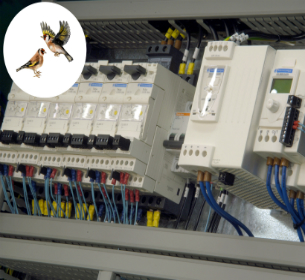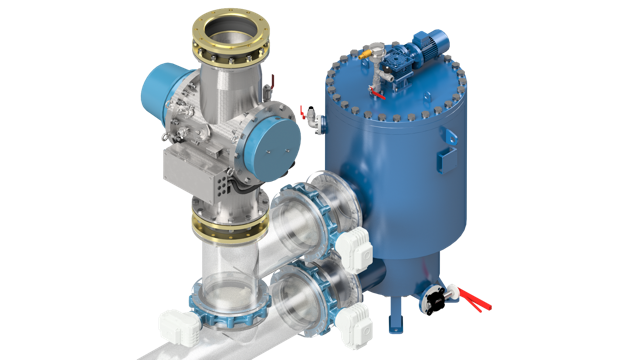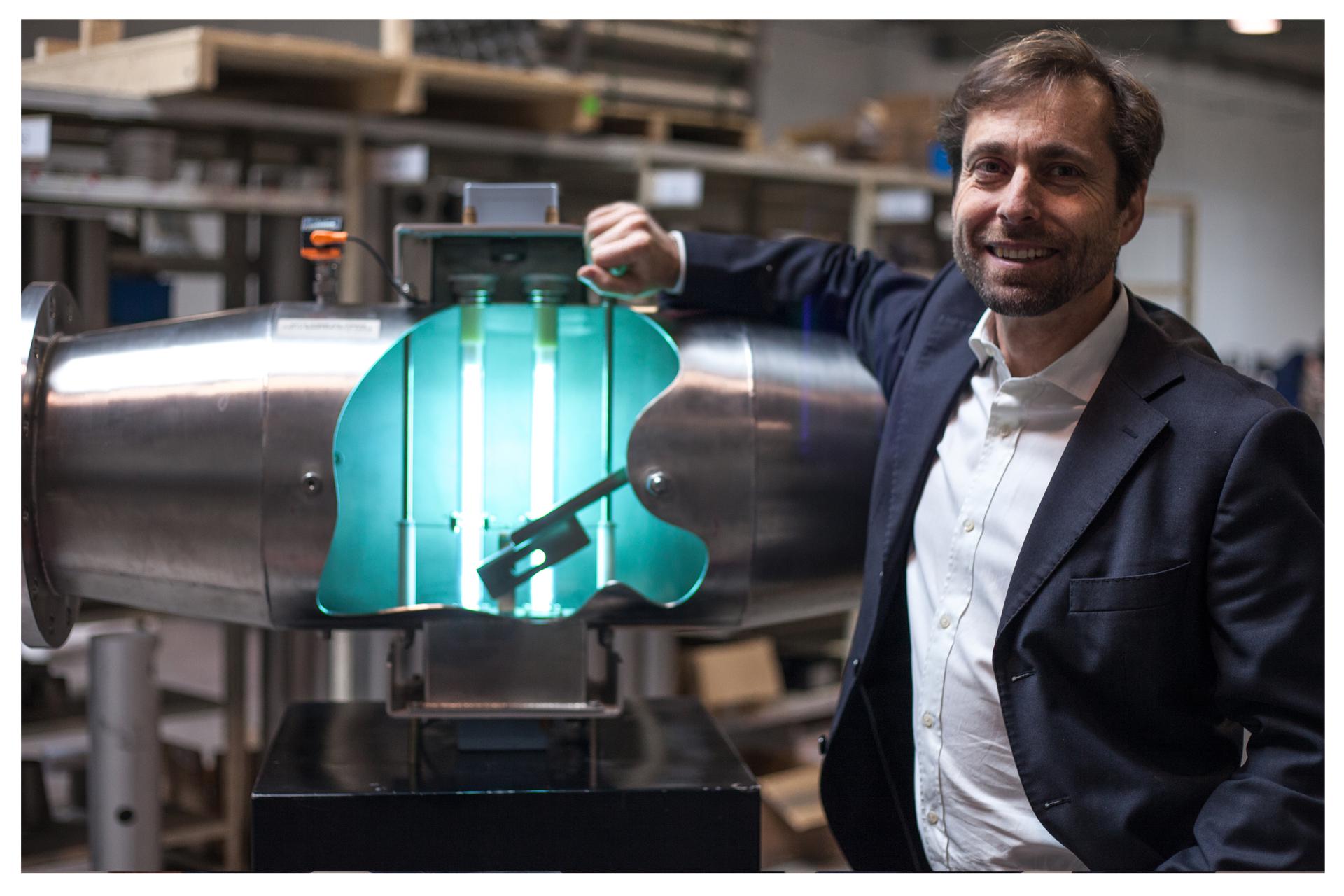Moves to standardise control panels for Ballast Water Treatment Systems are being stepped-up as final ratification of the International Maritime Organization’s (IMO) worldwide convention approaches.
In this week’s spotlight Ian Hamilton, Ballast Water Treatment Systems (BWTS) project leader at marine electrical wiring control and instrumentation specialists CMR Group explains more.
Used to maintain balance and stability when a ship is empty of cargo, ballast water can also be responsible for bringing invasive species of microorganisms into non-indigenous environments, causing a major threat to marine ecosystems.
All vessels involved in international voyages are required to manage their ballast water and sediments under the International Convention for the Control and Management of Ships’ Ballast Water and Sediments (BWM Convention), adopted by the IMO in 2004. This requires a reduction in the concentration of aquatic organisms in ballast water to below certain levels (D-2 Standard) before discharge in order to prevent trans-boundary movement of harmful aquatic organisms and pathogens that unmanaged ballast water discharge may cause.
This year will see the IMO’s Ballast Water Management (BWM) convention finally ratified, which will have a significant impact on the marine sector, In particular, the US Coastguard’s approval of the new standards are being seen as a major big step towards the final implementation of the regulations – it is estimated that more than 60,000 vessels worldwide, including 5,000 oil tankers, will need to be retro-fitted with BWTS to ensure compliance.
But when it comes to specifying BWTS to manage this process there are different considerations facing new build vessels and existing ships. Yards need to identify the options for installing ballast water treatment systems in original specifications – both within the construction programme or through retrofitting. This, as advised by Lloyd’s Register, may involve providing system drawings to show how a selection of different treatment options could be fitted, ensuring that sufficient space has been allocated for retrofitting treatment systems if they are not included in the initial build. Service connections should also be fitted to ballast systems in preparation for retrofitting of the selected treatment equipment.
For existing vessels, operators will need to be aware of all modifications necessary to fit systems, and it could be necessary to obtain schematic arrangements and equipment drawings from the system supplier in order for the technical department to develop a work plan. This may alternatively be provided by the supplier but the ship operator will still need to provide the vessel’s ballast water system drawings, functional requirements and details of compartmental spaces where the equipment is to be fitted.
Careful Thought
Selecting a treatment system should involve a number of key steps to ensure success. The first is to consider initial aspects such as vessel type and characteristics, ballast capacity and flow rate requirements before moving onto technical and operational considerations. These include the time required for treatment to be effective, ballast and treatment pumping rates, characteristics of ballast system, health and safety, in-service operational requirements, explosion proof equipment (particularly apposite for oil tankers), power requirements and onboard systems, controls and alarms, and space constraints.
Following these steps, treatment options need to be considered. For example, will the requirement be for filtration or treatment or a combination of both? What chemical options are required? Will mechanical means such as cavitation (the formation of vapour cavities in a liquid) be required and what about UV radiation and ultrasonic?
Careful thought needs to be given to choosing a supplier and reviewing specifications before moving ahead to the final stage of purchase and installation. And here, experience in the sector counts – the benefit of opting for a supplier that understands the legislation, has established marine experience and expertise with a worldwide reach and can ramp up volumes very quickly as the regulations kick-in cannot be overstated if project systems are to be designed and delivered on-time (and supported on a global basis).
Ship operators will need to provide a tender specification for the potential ballast water treatment which includes control suppliers detailing technical requirements covering pump flow rates and diagrams of the pipework with connection details, pumping capacities and valve sections clearly shown. Compartment details, available power supply and routing for control cabling and certification requirements also needed to be included.
Furthermore, in addition to price it will be important to factor in installation and commissioning costs in the tender alongside training requirements, forecasted operating costs, maintenance and support, delivery times for supply and fitment and any special yard facilities or ship modifications for equipment installation. Ballast water systems should also include an integrated visual alarm for the purposes of cleaning, calibration and, if necessary, repair and maintenance – and these events should be recorded by any control equipment integrated with, or certainly located close to, the ship’s ballast water systems.
Control Technology
Cumulative investments of over $30bn are expected to be made into ballast water treatment systems over the current decade, according to a Frost & Sullivan study. This will involve thousands of maritime vessels requiring a system to be installed between now and 2020, driving massive requirements for orders. However, all these systems will need control and monitoring systems to ensure proper performance and prevent time consuming and costly damage to components.
The two main water handling methods for BWTS are either systems for treating the water before it reaches the ballast tanks (In-Line) or ‘In-Tank’, which treat the water in the tanks during a vessel’s voyage. Vessel size will affect panel specification but there’s also a need for a degree of flexibility for BWTS OEMS and their customers – vessel operators – who will need to blanket-fit thousands of installations with different configurations.
The key to meeting requirements here is to adopt a modular approach – close co-operation with OEMs to modularise and standardise control panels. This can reduce costs, and cut delivery manufacturing lead times, allowing OEMs to focus on core components such as the UV lamps or Chlorination while taking advantage of standard parts and consistent pricing as they build their BWTS. Standardised panel systems such as CMR Group’s Goldfinch are being developed with OEMs, simplifying the process from specification to final delivery and contributing to improving BWTS time-to-market.
Following ratification of the BWM convention, the BWTS market will grow significantly which in turn, is likely to create am extremely competitive market for associated technologies and allied systems. So panel control standardisation, and the capacity to cut delivery times, are going to be critical factors in the battle to secure overall system sales.
Shared working in partnership will be important to expanding BWTS OEMs’ offering and maximising sales potential. After all, if it’s beneficial for one, then it could be advantageous for all OEMs working alongside companies such as CMR, who can build common types of panels which ultimately aids industry standardisation.

































